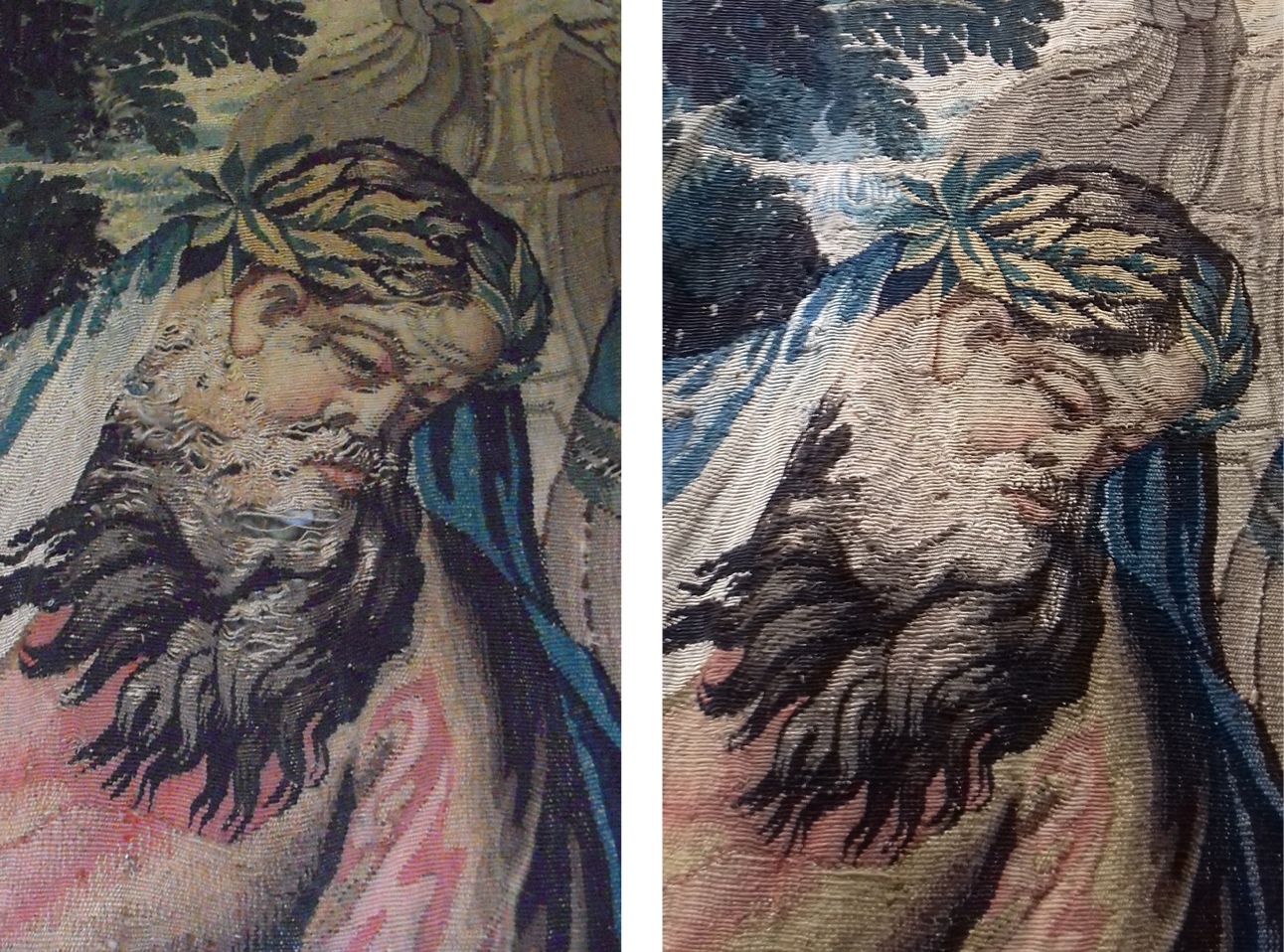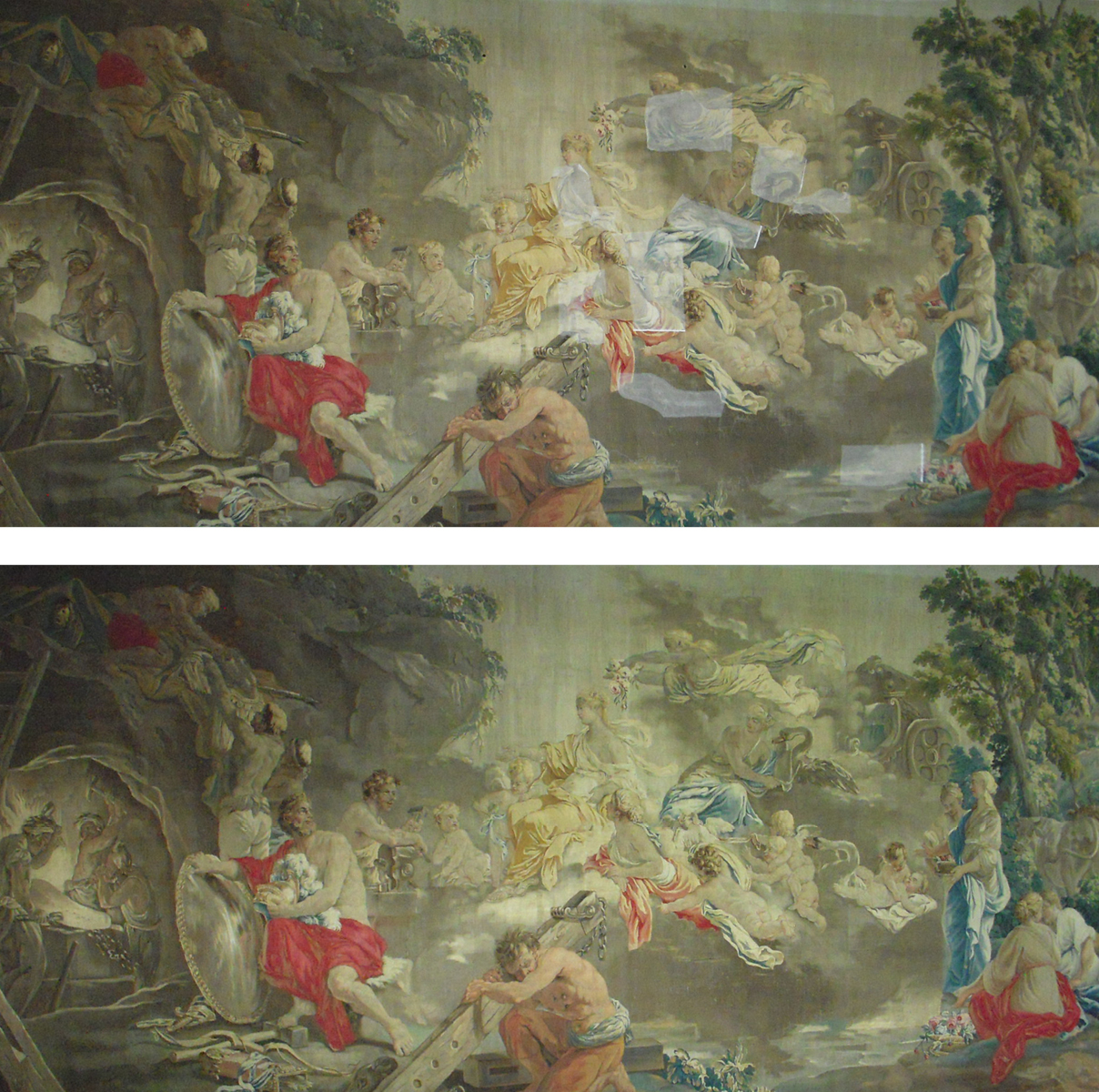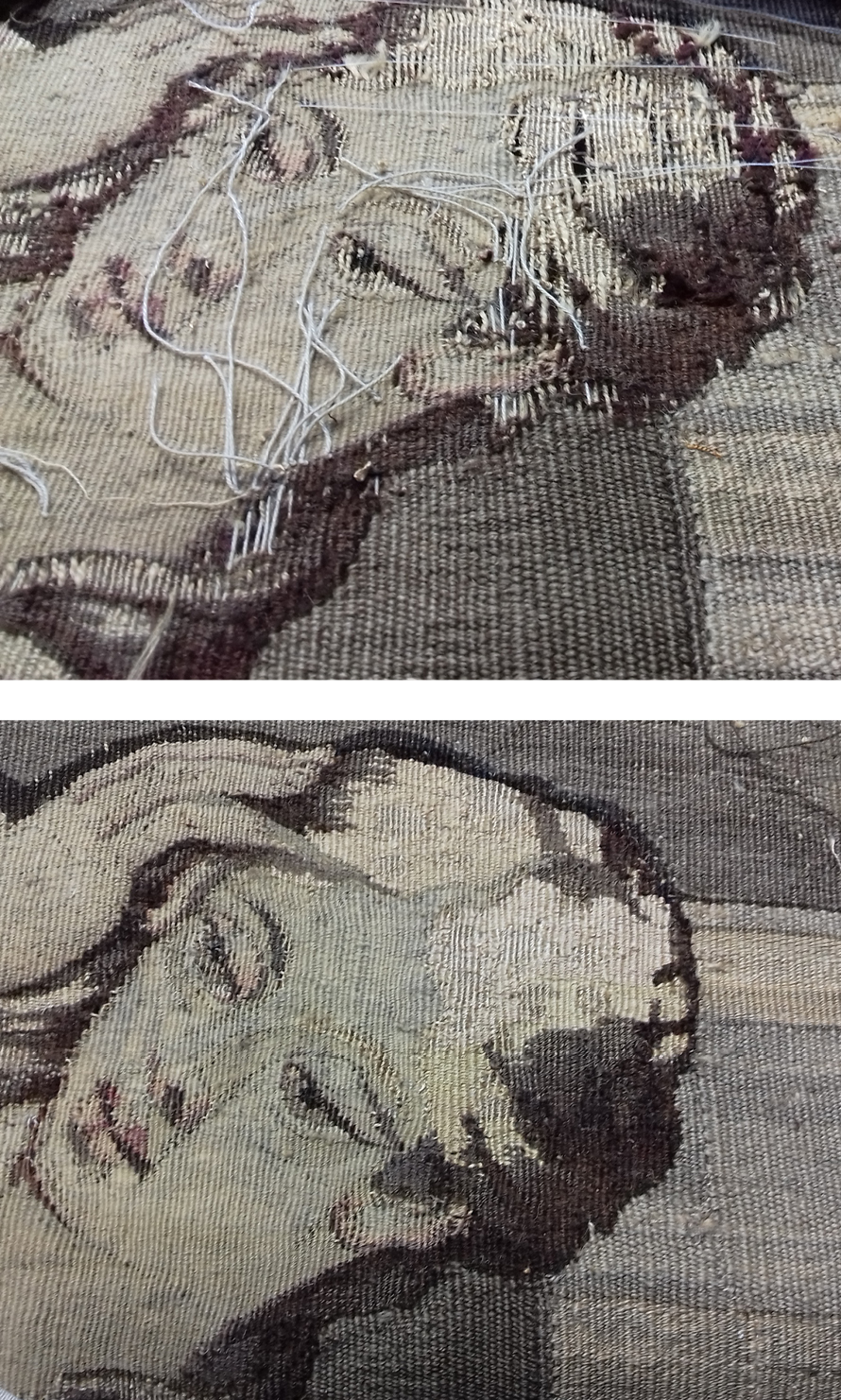
Iphigenia’s sacrifice (detail)
before/after restoration
“The story of Achilles” – wall tapestry
17th century, Aubusson
Esteem for beautiful work motivates PINTON’s teams daily. Therefore the mill is rolling out a unit dedicated to restoration and conservation as well as preventive conservation.
Preventing, preserving and operating on textile work
Textile work can undergo various forms of damage. Dust particles through their motion can cause abrasion of fibres. Poor control of temperature and humidity levels, but also control of lighting can lead to significant and even irreversible structural degradation, such as dehydration of fibres, mould or colour alteration. To contribute to the lastingness of an object through various processes of curative conservation, is to partake in its history. It partakes in its passing-on to future generations as the heritage of an individual, a family, a local community or a nation. It means to ensure its safeguard. Therefore, the condition survey– a meticulous observation task – is a decisive act. It will enable the restorer to define the options of necessary treatment on the object that will nevertheless preserve its nature as cultural good and its value as testimony to the passing of time.
A conservator entitled by the French Museums Department
After studying in the Tapestry Restoration department at the Aubusson École Nationale d’Art Décoratif , where she carried out practical work for the Ateliers du Mobilier National, Carole Saint-Cricq attended several training sessions at the Institut National du Patrimoine. Specialized in flat textiles, she obtained accreditation from the French Museums Department to carry out restoration on their collection’s historical pieces in 2003. After working as a technical expert and workshop manager for a company renowned in tapestries and textiles conservation and restoration, she opened her own workshop. As of now Carole Saint-Cricq is bringing her wealth of know-how and outstanding experience to Pinton, where she is now at the head of the Conservation and Restoration unit. Throughout her career Carole Saint-Cricq has restored prestigious works, properties of national and departmental museums, historic monuments and private collectors. She has also practiced her expertise on personal objects from family belongings. Whether it be Coptic textiles, Aubusson tapestries from the 17th, 18th and 20th centuries or textiles from the French Revolution, Carole Saint-Cricq has dedicated the same emotion, the same admiration and the same attention to each and every piece entrusted to her.
conservation and restoration: history and concept
From early on, humanity has been concerned with preserving and repairing its most antique objects and buildings. In France, restoration developed as a profession during the 18th century. But it was not until the 20th century that it became a structured and internationally-defined discipline. Nowadays conservation is preferred to restoration. Indeed, restoration of a work implies to bring it back to its original full structure. It aims at preserving the reading and aesthetic unity of a damaged tapestry by the “restoration” of colors or the filling-in of missing parts, or both. Restoration is a major operation that may involve replacing an exhausted warp by tying in fragments together or reconstituting a design or part of a tapestry.
The Restoration and Conservation unit, a new commitment by PINTON for the preservation of heritage.
On the other hand, conservation means to prevent and safeguard a work by fixing the existing damage while maintaining its actual condition. Curative conservation operations must be decipherable, reversible and stable. Above all, measures of curative conservation value the aesthetic, artistic, cultural and historical testimony of the work. Finally, preventive conservation focuses on preventing future and foreseeable deterioration due to exposure, use or storage.
Added to creation, design and manufacturing, PINTON is yet again proving its dedication to textile art and buttressing its expertise in the matter.

Venus at the Lemnos Forge
before/after cleaning and conservation
from the collection of the Cité Internationale de la Tapisserie
cartoon: Louis Lagrenée, 1770-1780, Aubusson

Iphigenia’s sacrifice (detail)
before/after restoration
“The story of Achilles” – wall tapestry
17th century, Aubusson
Practical information, technical details
In a restoration and preservation process, the survey carried out on objects is essential. It often allows to opt for preventive conservation that will benefit its lastingness. Micro-suction, suction-controlled vacuuming, brushing or wet cleaning of a textile work are all services offered by the PINTON’s Restoration and Conservation Division. As well as the support or replacement of a hanging system when these are no longer suitable for antique textiles. Carole Saint-Cricq works on carpets as well as mural or seating tapestries. She can also operate on banners, flags, archaeological textiles, liturgical fabrics and ornaments, chinoiseries and all types of silk. Drawing up an estimate requires a survey of the piece’s condition in situ. Therefore, an on-site appointment is highly recommended. In case this is not an option, the object to be restored can be brought into a PINTON showroom in Paris or Nice. The last resort, in an exceptional manner would be to establish a condition report and first estimate from photos, even though less precise and less reliable than an in-person survey.
